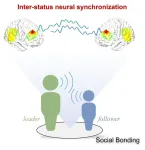Research Highlights:
Preliminary findings from a long-term study of children in Massachusetts have potentially linked regularly drinking sugary drinks and fruit juices (8 ounces or more daily) during childhood and adolescence to a higher risk of developing Type 2 diabetes, based on glycemic markers, among boys but not girls.
The researchers also found that eating fresh fruit in childhood and adolescence was not associated with an increase or reduction in markers for Type 2 diabetes risk.
Embargoed until 3p.m. CT/4 p.m. ET, Tuesday, March 19, 2024
CHICAGO, March 19, 2024 — A small, long-term study of almost 500 children in Massachusetts has found that regularly drinking sugary drinks and 100% fruit juices during childhood and adolescence may be linked to a higher risk of developing Type 2 diabetes among boys than girls, according to preliminary research to be presented at the American Heart Association’s Epidemiology and Prevention│Lifestyle and Cardiometabolic Scientific Sessions 2024, March 18- 21, in Chicago. The meeting offers the latest science on population-based health and wellness and implications for lifestyle.
“While these findings are preliminary, they support the existing evidence about the potential relationship between beverages with added sugar and long-term risk of Type 2 diabetes in children,” said lead investigator Soren Harnois-Leblanc, Ph.D., a registered dietitian and postdoctoral researcher in the department of population medicine at Harvard Pilgrim Health Care Institute and Harvard Medical School, both in Boston. “Pediatricians and other health care professionals should caution young patients and their parents about sugary drinks and fruit juices when discussing healthy eating habits.”
According to a 2022 American Heart Association fact sheet about sugary drinks, nearly two-thirds of children and adolescents in the U.S. consume at least one sugary drink, such as soda, lemonade or an energy drink, each day. It also notes that in addition to weight gain, eating too many foods with added sugars, especially from sugary drinks, raises the risk of developing heart disease, high blood pressure, Type 2 diabetes and tooth decay.
Using data from Project Viva, an ongoing long-term study of women and their children in eastern Massachusetts that began in 1999, researchers explored whether drinking sugary drinks, 100% fruit juices and eating fresh fruits were associated with markers for developing Type 2 diabetes. Researchers calculated the average consumption of sugary drinks, 100% fruit juices, and fresh fruits over childhood and adolescence based on dietary records and assessed their potential associations to three markers of Type 2 diabetes: insulin resistance, fasting blood glucose level and HbA1c levels. These markers were measured by a single blood test while fasting in late adolescence (approximately age 17).
The analysis found:
Each daily serving of sugary drinks (approx. 8 ounces) during childhood and adolescence among boys was associated with a 34% increase in insulin resistance; a 5.6 milligrams per deciliter (mg/dl) increase in fasting glucose levels; and a 0.12% increase in HbA1c levels in late adolescence.
Drinking 100% fruit juice throughout childhood and adolescence was linked to a 0.07% increase in HbA1c levels in late adolescence per daily serving of 100% fruit juice among the boys in the study, with only a slight increase in girls of 0.02%.
Eating fresh fruit during childhood and adolescence did not appear to have a positive or negative effect on the risk of developing Type 2 diabetes among the boys or girls in the study, according to Harnois-Leblanc.
The associations between regularly drinking sugar-sweetened beverage and insulin resistance, fasting blood glucose levels and elevated HbA1c levels among boys persisted when other health, family and social factors were considered. These factors included socioeconomic status; child’s and mother’s body mass index; mother’s age at time of child’s birth; maternal and paternal history of Type 1 or Type 2 diabetes; overall diet quality and other lifestyle behaviors.
“Although several aspects of biology and behaviors differ between boys and girls, I would have expected to also find an association between sugar-sweetened beverages and fruit juice intake and the increases in insulin resistance, glycemia and HbA1c levels in late-adolescent girls. I was also surprised that eating whole fruits did not reduce the levels of these markers of Type 2 diabetes,” Harnois-Leblanc said.
“The next steps are to use more advanced statistical tools to enable us to better understand the potential causal role of sugary drinks and fruit juices, and to examine whether the relationships may also differ among children by race and/or ethnicity.”
Study background and details:
Researchers analyzed data of children of the 2,128 pregnant women who had children while enrolled in Project Viva. 972 of the children met criteria for inclusion in this study (parent-completed questionnaires at the child’s age-3 examination and no personal or parental history of Type 1 or Type 2 diabetes, assessed separately from parental history of Type 2 diabetes). Of the 972 children, 455 had a fasting blood sample collected at a research visit in late adolescence, Harnois-Leblanc noted.
240 of the children in the study were girls and 215 were boys.
Project Viva is a long-term study of women and their children in eastern Massachusetts that began enrollment in 1999. The study is focused on improving maternal and child health by examining the potential impact of various life and health factors during and after pregnancy on the mother’s health and their children’s health, including a review of diet and nutrition. Children were followed from birth to late adolescence, up to age 20 at most recent follow-up.
Researchers evaluated the frequency of drinking sugary drinks, fruit juices and eating fresh fruit (based on standard serving sizes) from questionnaires completed by the parent at the child’s age of approximately 3, 8 and 13 years old; and measured fasting blood glucose, insulin and HbA1c levels in late adolescence (average age of 17.4 years).
The study had several limitations. Although it found an association between regularly drinking sugary drinks and fruit juices and the development of markers for Type 2 diabetes, it could not prove that the drinks caused Type 2 diabetes. Additionally, the relatively small number of study participants may have affected the strength of the association found between sugary drinks and fruit juices and the increased risk of developing Type 2 diabetes.
“Diet and cardiometabolic health are complex, with many factors varying over time and interacting in different ways, and this study represents one small piece of this puzzle,” Harnois-Leblanc said.
American Heart Association nutrition committee member Penny M. Kris-Etherton, Ph.D., R.D., FAHA, said, “This study has shown that greater sugar sweetened beverage intake, including fruit juice, throughout childhood and adolescents is associated with higher markers of diabetes risk in late adolescents in boys but not girls. It is striking that many measures of Type 2 diabetes risk were increased in boys at such an early age.”
Kris-Etherton, an emeritus professor of nutritional sciences at Penn State University, was also a co-author of the Association’s 2018 science advisory on low-calorie sweetened beverages and cardiometabolic health.
“Importantly, although fruit intake did not appear to be protective, it nonetheless was not associated with increased Type 2 diabetes risk,” she said. “These findings support the current dietary recommendations of the Association, and many organizations, to limit or eliminate drinking sugar sweetened beverages and instead consume whole fruits, which are high in so many nutrients especially the shortfall nutrients in the average American diet.” (Shortfall nutrients are the vitamins and nutrients that people are missing each day from the foods they eat; long-term deficiencies in some vitamins and nutrients have been linked to adverse health outcomes.)
The health care resource called Know Diabetes by Heart, developed by the American Heart Association and the American Diabetes Association, provides information about preventing heart disease and stroke while living with Type 2 diabetes. The initiative aims to raise awareness and understanding of the link between Type 2 diabetes and cardiovascular disease, provide resources and support to help people better manage their risk for heart disease and stroke, support health care professionals by sharing the latest clinical guidelines and science and engage health systems to improve quality of care for people with Type 2 diabetes.
Co-authors, their disclosures and funding sources are listed in the abstract.
Statements and conclusions of studies that are presented at the American Heart Association’s scientific meetings are solely those of the study authors and do not necessarily reflect the Association’s policy or position. The Association makes no representation or guarantee as to their accuracy or reliability. Abstracts presented at the Association’s scientific meetings are not peer-reviewed, rather, they are curated by independent review panels and are considered based on the potential to add to the diversity of scientific issues and views discussed at the meeting. The findings are considered preliminary until published as a full manuscript in a peer-reviewed scientific journal.
The Association receives funding primarily from individuals; foundations and corporations (including pharmaceutical, device manufacturers and other companies) also make donations and fund specific Association programs and events. The Association has strict policies to prevent these relationships from influencing the science content. Revenues from pharmaceutical and biotech companies, device manufacturers and health insurance providers and the Association’s overall financial information are here.
Additional Resources:
Multimedia is available on the right column of the release link https://newsroom.heart.org/news/sugary-drinks-fruit-juices-linked-to-higher-risk-of-developing-type-2-diabetes-among-boys?preview=46adbcf13c47836925a2e408e3b49f2c
After March 19, view abstract MP30 in the EPI│Lifestyle Scientific Sessions 2024 Online Program Planner.
Spanish news release
AHA news release: “Gateway” foods like candy, pastries and frozen treats may lead to unhealthy teen eating (Sept. 2022)
AHA news release: California study finds drinking sugary drinks daily may be linked to higher risk of CVD in women (May 2020)
AHA health information: Rethink Your Drink: Reducing Sugary Drinks in Your Diet
AHA health information: What is Diabetes?
For more news from AHA EPI│Lifestyle Scientific Sessions 2024, follow us on X (formerly Twitter) @HeartNews, #EPILifestyle24.
###
The American Heart Association’s EPI│Lifestyle Scientific Sessions 2024 is the world’s premier meeting dedicated to the latest advances in population-based science. The 2024 meeting is in-person only, Monday through Thursday, March 18-21, at the Hilton Chicago. The primary goal of the meeting is to promote the development and application of translational and population science to prevent heart disease and stroke and foster cardiovascular health. The sessions focus on risk factors, obesity, nutrition, physical activity, genetics, metabolism, biomarkers, subclinical disease, clinical disease, healthy populations, global health and prevention-oriented clinical trials. The Councils on Epidemiology and Prevention and Lifestyle and Cardiometabolic Health (Lifestyle) jointly planned the EPI│Lifestyle Scientific Sessions 2024. Follow the conference on Twitter at #EPILifestyle24.
About the American Heart Association
The American Heart Association is a relentless force for a world of longer, healthier lives. We are dedicated to ensuring equitable health in all communities. Through collaboration with numerous organizations, and powered by millions of volunteers, we fund innovative research, advocate for the public’s health and share lifesaving resources. The Dallas-based organization has been a leading source of health information for a century. During 2024 - our Centennial year - we celebrate our rich 100-year history and accomplishments. As we forge ahead into our second century of bold discovery and impact, our vision is to advance health and hope for everyone, everywhere. Connect with us on heart.org, Facebook, X or by calling 1-800-AHA-USA1.
END

